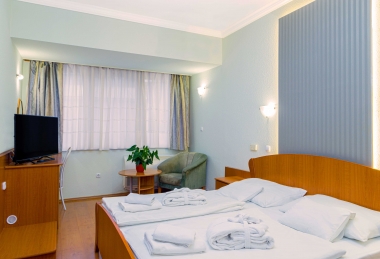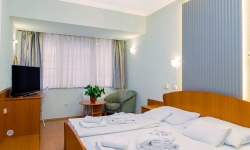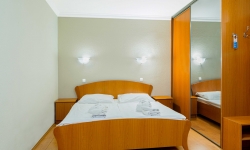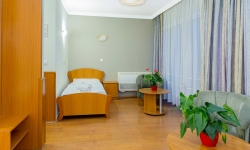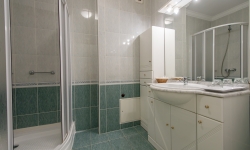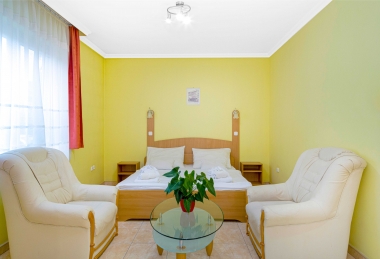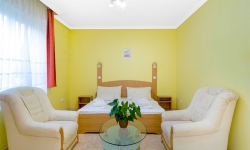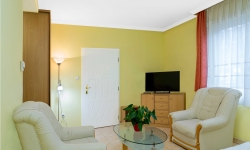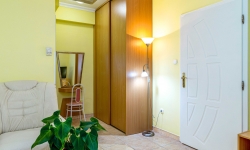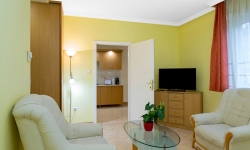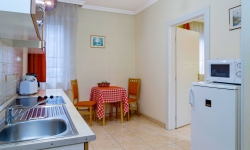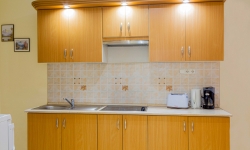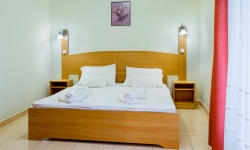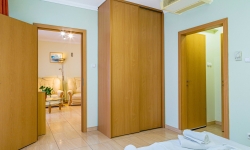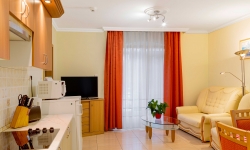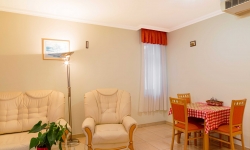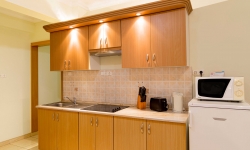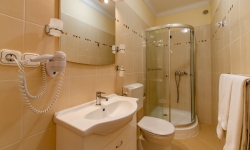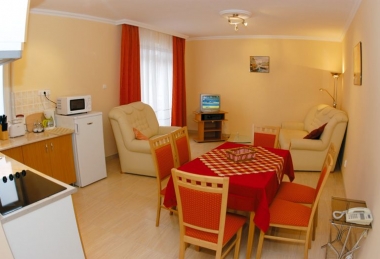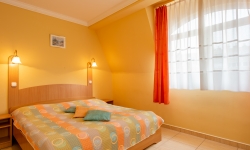Cycling trip offers
Cycling trip opportunities near Hajdúszoboszló.
Hajdúszoboszló – Nagyhegyes
There is a bicycle road between the towns of Hajdúszoboszló and Nagyhegyes; the road was opened to the bicycle traffic on 27th October, 2011. Its independent length between the towns is 7,866 meters, which, including the sections within the towns, reaches 13,571 meters!
Nagyhegyes – Balmazújváros
On 21st March, 2014, the Nagyhegyes - Balmazújváros cycle path was opened to the traffic. The section of the road between the towns is 6.9 km long, and the total elevation in the direction of Balmazújváros barely reaches 10 meters. This section is much more interesting than the section between Hajdúszoboszló and Nagyhegyes.
Lake Crater (Kráter) (12.2 km just to get there)
From the town, you have to start on the Nagyhegyes cycle path, then turn right before Nagyhegyes at the crossing near the chicken farm – at the bench, leave the cycle path and continue the trip on the agricultural road. After a 3.5 km section along the hillside, you should turn left. You cannot miss it, as this is the only concrete/asphalt road. From here, you can clearly see the wooded area around the lake.
To view the route on the map click here>>
Lake Látókép (17.2 km just to get there)
We can reach Lake Gatya, as many people call it, from the Lake Crater through the fields. The quality of the roads is quite variable: after rain, the tractors and the horse-drawn carriages cut deep grooves into the ground, however, it is usually easy to walk or ride your bike on them during longer periods of dry weather. The experimental area of the Debrecen Agricultural Science Center is located near the lake, where the students and their teahcers perform various measurements and experiments.
To view the route on the map click here>>
Angyalházi Bridge – Nagyhegyes – Hajdúszoboszló (31.2 km or 37.8 km the whole)
The bridge, with significant agricultural traffic, can be reached on two routes. Any inconvenience similar to the one experienced at Lake Crater may be caused by the pig farm on the right side of the first route. If there are north and east winds, due to the proximity of the pig farm, unpleasant smells can be noticed on this section, which we can leave behind quickly on this route. Those who wish to avoid this smelly section, or just want to have a look around the cottages on the banks of the Eastern Main Canal, can choose the slightly longer second route, where one has to cycle all the way to the MOL natural gas site on the bike path and then turn left after the bench.
Beyond the angyalházi (Angel’s House) Bridge, the rich wildlife can be observed. Especially in the autumn, the migration of the common cranes provides a spectacular and breathtaking sight. This route is especially recommended for nature photographers! As it is slightly difficult to find our way on the dirt roads, it is recommended making a route description of the main points. Arriving at the section connecting Nádudvar with road 33, we can see a decent earthen mound. This is none other than the Vajda mound, one of the thousands of burial sites that were built. With its 95 m absolute and 9 m relative height, and its 11 ° side slope, this mound is the most significant one that has survived in the country! From here, cycle on the paved road, then turn right to reach road 33. Crossing the bridge of the paved road, you can return to the inner area of Nagyhegyes along the canal, from where you can return to Hajdúszoboszló on the cycle path.
To view the 31.2 km route on the map click here>>
To view the 37.8 km route on the map click here>>
Angyalházi Bridge – Nádudvar – Hajdúszoboszló (38.6 km the whole)
Starting on the route of the Angyalházi Bridge, and reaching the mound, we turn left to get to the area of Nádudvar. It is worth visiting the surroundings of the cemetery, the small lakes on Jókai Street, as well as the end of the railway line used for passenger traffic only on exceptional occasions. From Nádudvar, we can cycle back to Hajdúszoboszló on the asphalt road.
To view the route on the map click here>>
Ebes – Hajdúszovát – Hajdúszoboszló circle (26.6 km the whole)
After Ebes, the tour can be continued on several routes to Hajdúszoboszló. I recommend the longest, yet most convenient route. From the border of Hajdúszoboszló, we can find the dirt road leading to Ebes at two points: the one is the route marked on the Google map, and the other is the route highlighted on the photo. Personally, I recommend the second one because it is much easier to cycle. The route is easy to Ebes, as we need to cycle in the same direction all the way. An exception is the small detour due to the main road 4, which leads us under the railway overpass.
There are 1 to 2 farms on the fields, but there is usually little traffic here. When you reach Ebes, you have to cycle straight on Kossuth street, and then on Ady street to the intersection of the Béke street, which leads us out of the village. From here, you can cycle the road all the way to Hajdúszoboszló. Of course, the return trip can also be made through the fields if you leave Ebes at the Új sor and then turn right. Those who stay on the main road can visit the centre of the village of Hajdúszovát. Leaving the village, however, the quality of the asphalt road is not the best, but it is not impossible to cycle there even on a racing bike.
To view the route on the map click here>>
Nádudvar – Kaba – Hajdúszovát – Hajdúszoboszló (52.6 km the whole)
It can be a pleasant round trip for those who wish to make the trip for the sake of sports, rather than the sight. The circle can be further increased if we visit the village of Földes. Then we can cycle 59.9 km within the borderlands of Hajdúszoboszló. The quality of the road is not perfect everywhere, but due to the rather light traffic, we can still cycle undisturbed, and the long rows of trees provide an unparalleled view!
To view the route on the map click here>>
Hajdúszoboszló – Zádor Bridge (33,5 km just to get there)
The Zádor Bridge used to play a significant role in the marshland areas of Karcag, which had significant traffic. Following the regulation of the waterways, the swampy nature of the area ceased to exist, so the original role of the bridge became unnecessary, but it has been preserved as a monument to this day. The fauna of the area is quite rich: there are several rare bird species in the area, and the migration of common cranes can be observed in the autumn! Those who find the 67 km round trip too long, can enter the area of Karcag after a few kilometres, visit the windmill, and return to Hajdúszoboszló by train without further effort.
To view the route on the map click here>>
Fishponds in Hajdúszoboszló
It is an easy tour, but if you also roam the area of the fishponds, this trip will be a longer program! Leaving the city on the cycle path next to the main road 4, we can reach the bridge of the Eastern Main Canal, where one can only cycle on the same road as the car traffic. More precisely, according to the road signs, the cyclists are banned from the bridge, however, we can cycle up on the gravel strip next to the road - which is of impeccable quality - without further problem and very carefully! Walking around the bridge or walking down the stairs with the bike, one can continue the trip along the cottages. Leaving them, we can cross a sluice. From here, the landscape is undeveloped.
The sparkle of the fishponds is noticeable on the left, which is a lavish sight in the light of the setting sun! From the bank of the canal, we reach the Nádudvar - Hajdúszoboszló main road, and turning right, we can return to Hajdúszoboszló. It can be an extra during a winter tour to continue our ride from the bridge up the left bank of the canal to visit the swans, which have survived the winter at the overflow dam for several years, taking advantage of the fact that the water rarely freezes over completely due to the faster flow. In cold weather, we can bring them some food, as they are brave enough to come quite close to people.
(downloaded from: https://hajduszoboszlo.hu/programok/bringazz-hajduszoboszlon)
